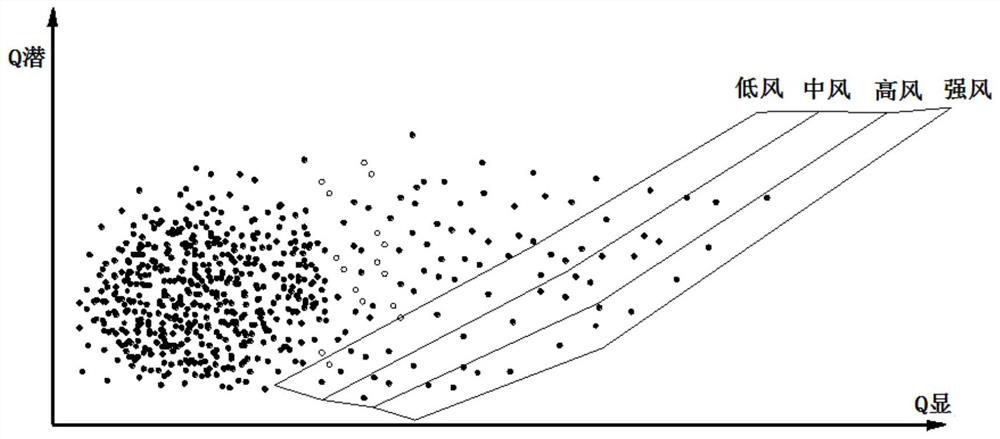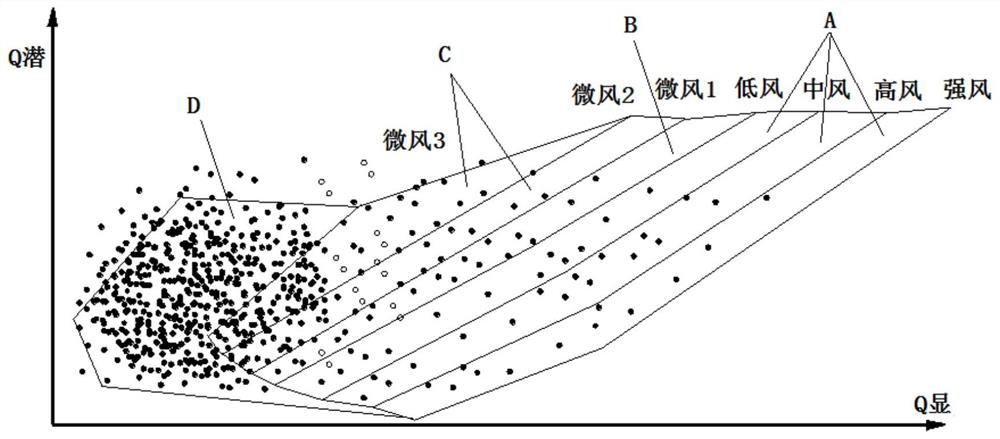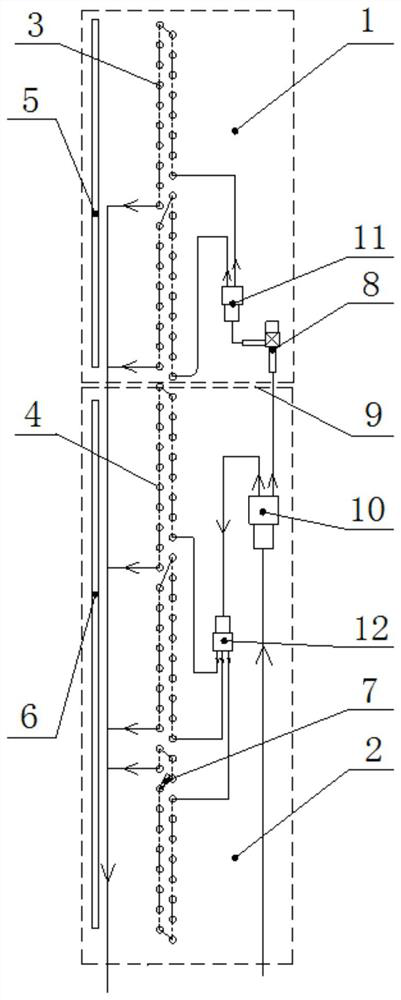A dual-duct air conditioner and its dehumidification method and system
A dual air duct and air-conditioning technology, which is applied in air-conditioning systems, heating and ventilation control systems, heating and ventilation safety systems, etc., can solve the problems of reducing sensible heat components, small air-conditioning cooling and dehumidification requirements, and loss of dehumidification capacity, etc., to achieve Effect of reducing sensible heat output, increasing latent heat output, and lowering temperature
- Summary
- Abstract
- Description
- Claims
- Application Information
AI Technical Summary
Problems solved by technology
Method used
Image
Examples
example 1
[0059] When the air conditioner is running with automatic wind speed or dehumidification, the indoor ambient temperature Tin is 25.5°C, the indoor relative humidity φ is 92%, the target temperature Ts is 25°C, and the target relative humidity φs is 50% (if the target relative humidity cannot be set, The default is 65%), ΔR=10rpm, T1=10°C, T2=5°C, E1=0.5°C, E2=-1.0°C, the minimum reliable operating speed of the indoor fan of the air conditioner is 100rpm. At this time, the target temperature difference E=Tin-Ts=25.5°C-25°C=0.5°C≤0.5°C (E1), φ=92%>70% (φ1), which meets the definition of ultra-low sensible heat and high latent heat load area, and the air conditioner enters Dehumidification mode for ultra-low sensible heat and high latent heat load area.
[0060] Indoor unit: The lower fan takes the low wind gear as the initial speed, such as low wind 800rpm. The upper fan operates at low wind speed, the solenoid valve on the upper evaporator 3 is closed, the refrigerant cannot p...
example 2
[0064] When the air conditioner is running with automatic wind speed or dehumidification, the indoor ambient temperature Tin is 25.5°C, the indoor relative humidity φ is 85%, the target temperature Ts is 25°C, and the target relative humidity φs is 60% (if the relative humidity cannot be set, then Default 65%), ΔR=10rpm, T1=10°C, T2=5°C, E1=0.5°C, E2=-1.0°C, the minimum reliable operating speed of the air-conditioning indoor motor is 100rpm. At this time, the target temperature difference E = Tin - Ts = 25.5°C - 25°C = 0.5°C ≤ 0.5°C (E1), φ - φs = 85% - 60% > 10% (φ2), in line with the ultra-low sensible heat and high latent heat load area If defined, the air conditioner enters the dehumidification mode in the low sensible heat and high latent heat load area.
[0065] Indoor unit: The lower fan takes the low wind gear as the initial speed, such as low wind 800rpm. The upper fan stops, the solenoid valve on the upper evaporator 3 closes, the refrigerant cannot pass through the...
PUM
 Login to View More
Login to View More Abstract
Description
Claims
Application Information
 Login to View More
Login to View More - R&D
- Intellectual Property
- Life Sciences
- Materials
- Tech Scout
- Unparalleled Data Quality
- Higher Quality Content
- 60% Fewer Hallucinations
Browse by: Latest US Patents, China's latest patents, Technical Efficacy Thesaurus, Application Domain, Technology Topic, Popular Technical Reports.
© 2025 PatSnap. All rights reserved.Legal|Privacy policy|Modern Slavery Act Transparency Statement|Sitemap|About US| Contact US: help@patsnap.com



